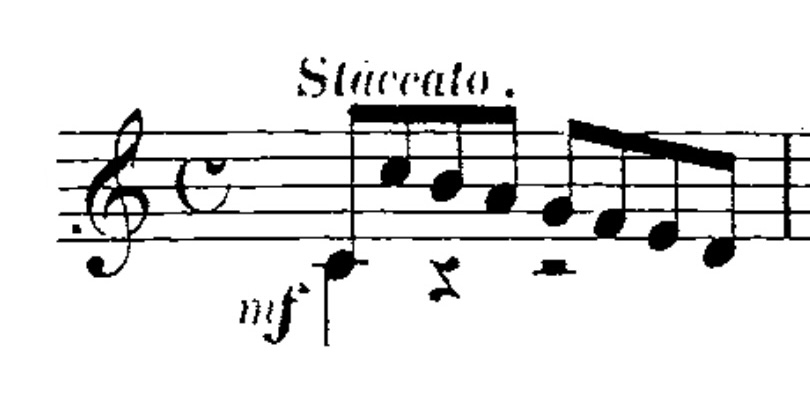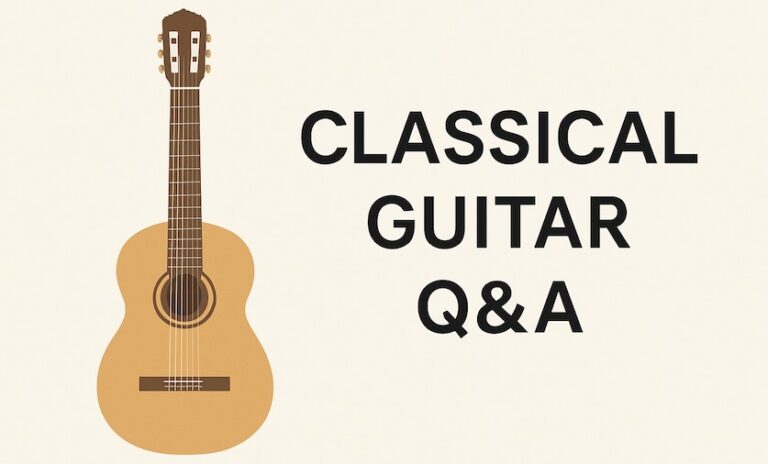Music Theory Lesson No.2a: Why do we use music notation? In this lesson I discuss the reasons for using music notation and break down each element that that makes up the definition. This is an important discussion before we start diving into music notation and theory. You can find all the lessons at the Music Theory Lessons page. Here’s the Youtube link if you want to watch it there.
Written Pitch and Rhythm allows for a relatively consistent performance in a universal musical language.
Let’s break down this thick sentence to understand each element.
Consistent Pitch – Regardless of exact tuning over the past hundreds of years, the relative distance of pitches in music notation are relatively consistent. If I play the opening passage of a piece of music (for example, the below) it sounds, relative to tuning, the same as it did when it was written. The distance between each note remains the same regardless of time period or musical instrument.

Consistent Rhythm – Similarly, the rhythm of the above piece is also relatively consistent. The quarter note bass and the overall eighth note rhythm would be performed relatively the same as it was when originally written or published. Even the tempo and articulation would be relatively the same. The tempo might have more flexibility but in general an allegro tempo is quick. Interpretation might change the delivery but the overall rhythm would be relatively the same.
In a Universal Language – This is the most important aspect of the answer. Both composers and musicians who read notation can look at music notation and understand what is happening in the music. Music notation is a visual representation of the pitch and rhythm. An interval such as a perfect 5th is literally 5 steps apart on the staff (we will learn about this later). Regardless if you are a guitarist, a pianist, and conductor, or singer, you can look at the above notation and understand it both musically and from a music notation perspective.
In contrast, tablature is not a universal language, it’s a secret guide to the instrument specific to guitarists or lutenists. It does not show music theory on the page, it only shows you where to play the note on a specific instrument. Music notation is a visual representation of the pitch whereas tab is a visual representation of the guitar. Although a guitarist might be about to reverse engineer the music theory in their head, it does not show music theory readily on the page. Intervals for example can not be measured on the page, instead an in-depth knowledge of the instrument is needed to work out the written distance of the actual pitch.

This is not a criticism of tablature, but the universal language aspect is simply not a part of tab and not of use to non-guitarists. It is also not a direct visual representation of the musical pitch. Tab has other directly applicable usages for guitarists but not for music theory discussions.
Final Thoughts
As we learn more music theory you will come to understand how the complexity of the musical system created over hundreds of years is embedded in music notation, giving performers, composers, and musicologists insights and information about the music as well as the motivations and ideas of composers.
Hope you found that helpful. Find more theory lessons on the Music Theory Lessons page. I’m offering these lessons free of charge but feel free to support the site here. If you need any clarification on this particular lesson please leave a comment below.



So far, these lessons have been good refreshers. I am looking forward to see where you take this.
Thank you for the effort!